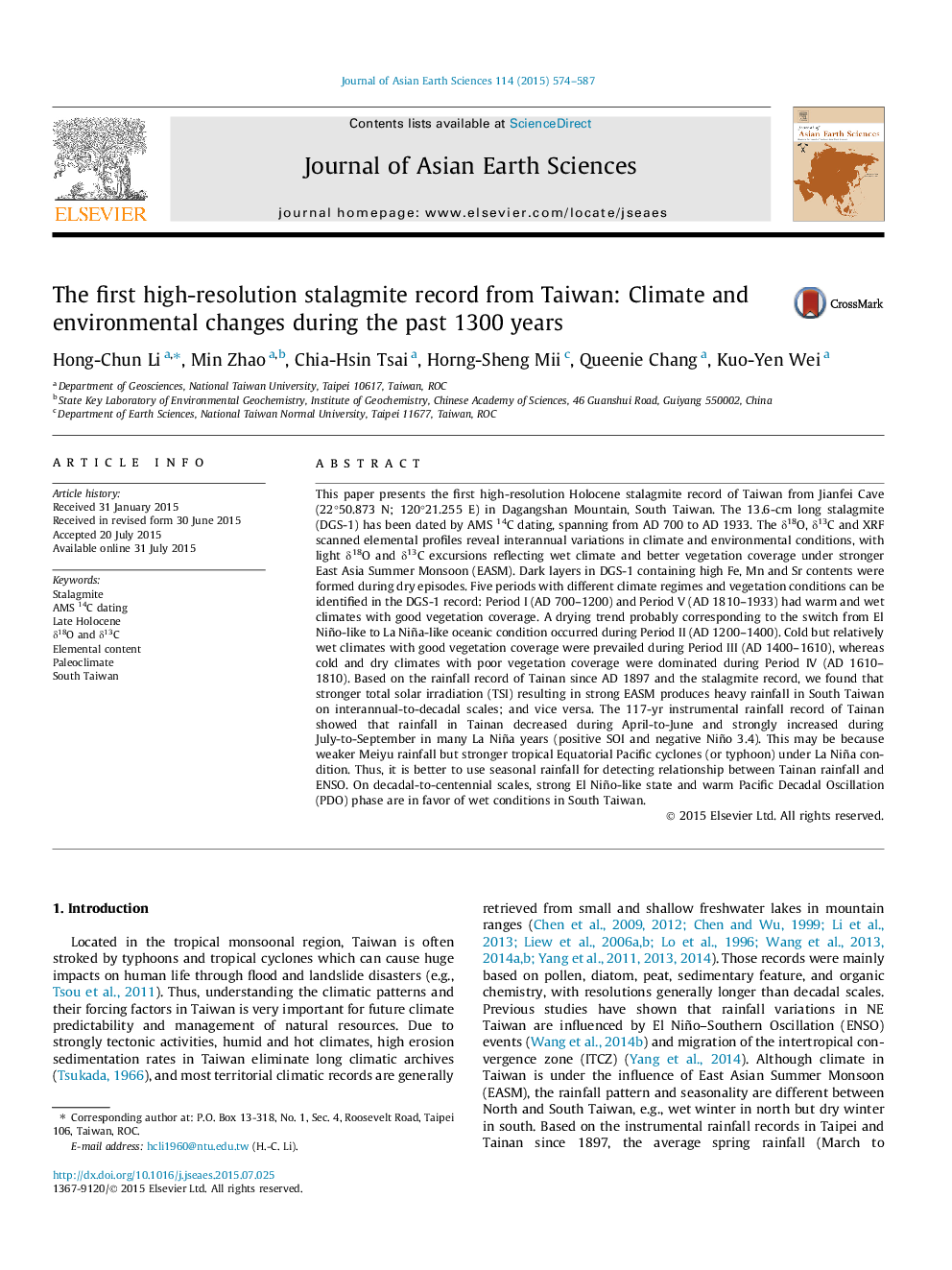| کد مقاله | کد نشریه | سال انتشار | مقاله انگلیسی | نسخه تمام متن |
|---|---|---|---|---|
| 4730163 | 1356739 | 2015 | 14 صفحه PDF | دانلود رایگان |
• AMS 14C dated stalagmite with δ18O, δ13C and elemental profiles during AD 700–1933.
• Discussing AMS 14C dating, XRF scan, and forcing factors on rainfall in South Taiwan.
• 230Th/U dating problems on young and dirty stalagmite.
• Seasonal rainfall should be used when discussing ENSO and PDO effects on rainfall.
• Climate and vegetation variations in South Taiwan during AD 700–1933 have discussed.
This paper presents the first high-resolution Holocene stalagmite record of Taiwan from Jianfei Cave (22°50.873 N; 120°21.255 E) in Dagangshan Mountain, South Taiwan. The 13.6-cm long stalagmite (DGS-1) has been dated by AMS 14C dating, spanning from AD 700 to AD 1933. The δ18O, δ13C and XRF scanned elemental profiles reveal interannual variations in climate and environmental conditions, with light δ18O and δ13C excursions reflecting wet climate and better vegetation coverage under stronger East Asia Summer Monsoon (EASM). Dark layers in DGS-1 containing high Fe, Mn and Sr contents were formed during dry episodes. Five periods with different climate regimes and vegetation conditions can be identified in the DGS-1 record: Period I (AD 700–1200) and Period V (AD 1810–1933) had warm and wet climates with good vegetation coverage. A drying trend probably corresponding to the switch from El Niño-like to La Niña-like oceanic condition occurred during Period II (AD 1200–1400). Cold but relatively wet climates with good vegetation coverage were prevailed during Period III (AD 1400–1610), whereas cold and dry climates with poor vegetation coverage were dominated during Period IV (AD 1610–1810). Based on the rainfall record of Tainan since AD 1897 and the stalagmite record, we found that stronger total solar irradiation (TSI) resulting in strong EASM produces heavy rainfall in South Taiwan on interannual-to-decadal scales; and vice versa. The 117-yr instrumental rainfall record of Tainan showed that rainfall in Tainan decreased during April-to-June and strongly increased during July-to-September in many La Niña years (positive SOI and negative Niño 3.4). This may be because weaker Meiyu rainfall but stronger tropical Equatorial Pacific cyclones (or typhoon) under La Niña condition. Thus, it is better to use seasonal rainfall for detecting relationship between Tainan rainfall and ENSO. On decadal-to-centennial scales, strong El Niño-like state and warm Pacific Decadal Oscillation (PDO) phase are in favor of wet conditions in South Taiwan.
Journal: Journal of Asian Earth Sciences - Volume 114, Part 3, 15 December 2015, Pages 574–587
